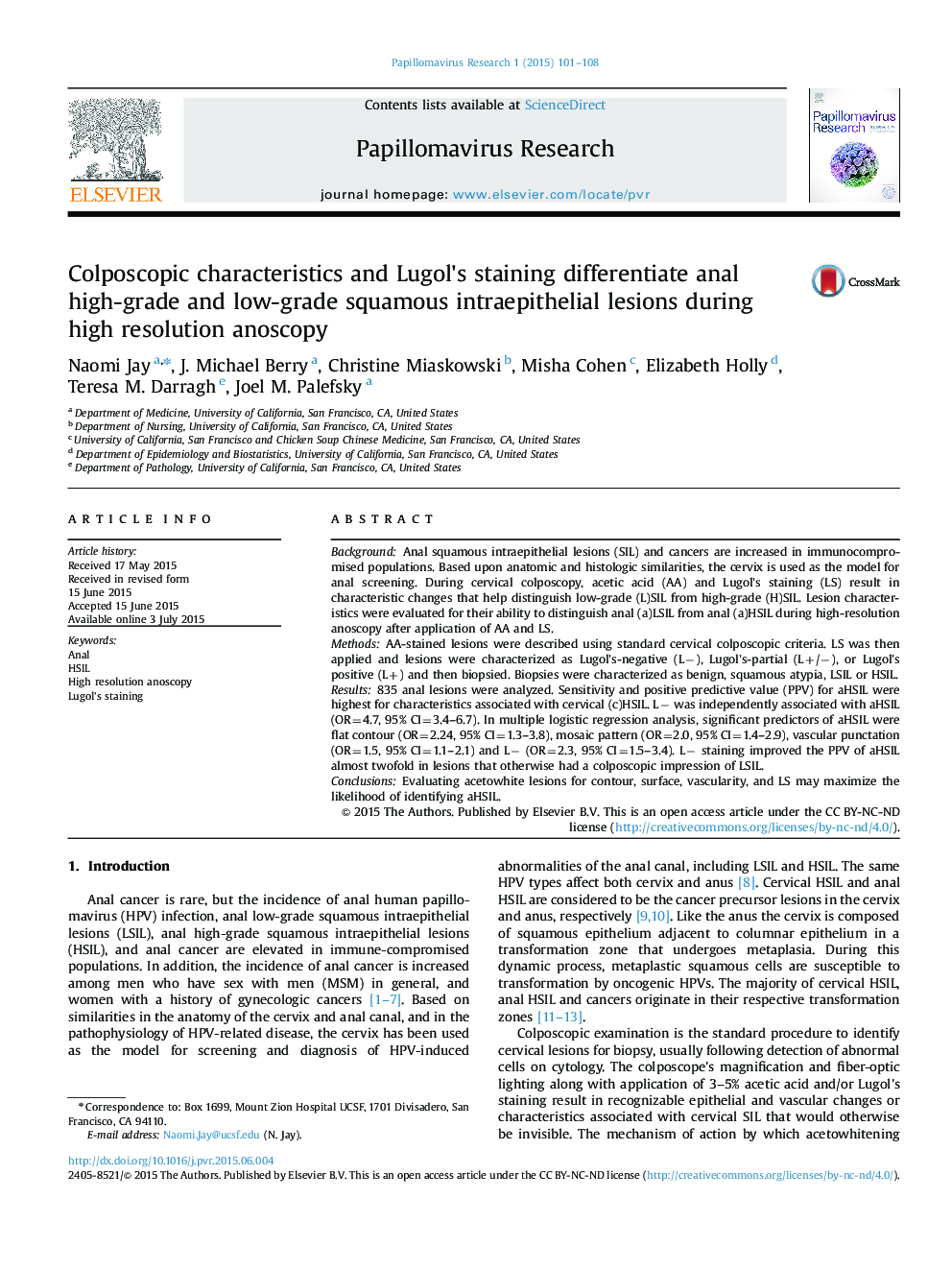| Article ID | Journal | Published Year | Pages | File Type |
|---|---|---|---|---|
| 4372315 | Papillomavirus Research | 2015 | 8 Pages |
BackgroundAnal squamous intraepithelial lesions (SIL) and cancers are increased in immunocompromised populations. Based upon anatomic and histologic similarities, the cervix is used as the model for anal screening. During cervical colposcopy, acetic acid (AA) and Lugol׳s staining (LS) result in characteristic changes that help distinguish low-grade (L)SIL from high-grade (H)SIL. Lesion characteristics were evaluated for their ability to distinguish anal (a)LSIL from anal (a)HSIL during high-resolution anoscopy after application of AA and LS.MethodsAA-stained lesions were described using standard cervical colposcopic criteria. LS was then applied and lesions were characterized as Lugol׳s-negative (L−), Lugol׳s-partial (L+/−), or Lugol׳s positive (L+) and then biopsied. Biopsies were characterized as benign, squamous atypia, LSIL or HSIL.Results835 anal lesions were analyzed. Sensitivity and positive predictive value (PPV) for aHSIL were highest for characteristics associated with cervical (c)HSIL. L− was independently associated with aHSIL (OR=4.7, 95% CI=3.4–6.7). In multiple logistic regression analysis, significant predictors of aHSIL were flat contour (OR=2.24, 95% CI=1.3–3.8), mosaic pattern (OR=2.0, 95% CI=1.4–2.9), vascular punctation (OR=1.5, 95% CI=1.1–2.1) and L− (OR=2.3, 95% CI=1.5–3.4). L− staining improved the PPV of aHSIL almost twofold in lesions that otherwise had a colposcopic impression of LSIL.ConclusionsEvaluating acetowhite lesions for contour, surface, vascularity, and LS may maximize the likelihood of identifying aHSIL.
